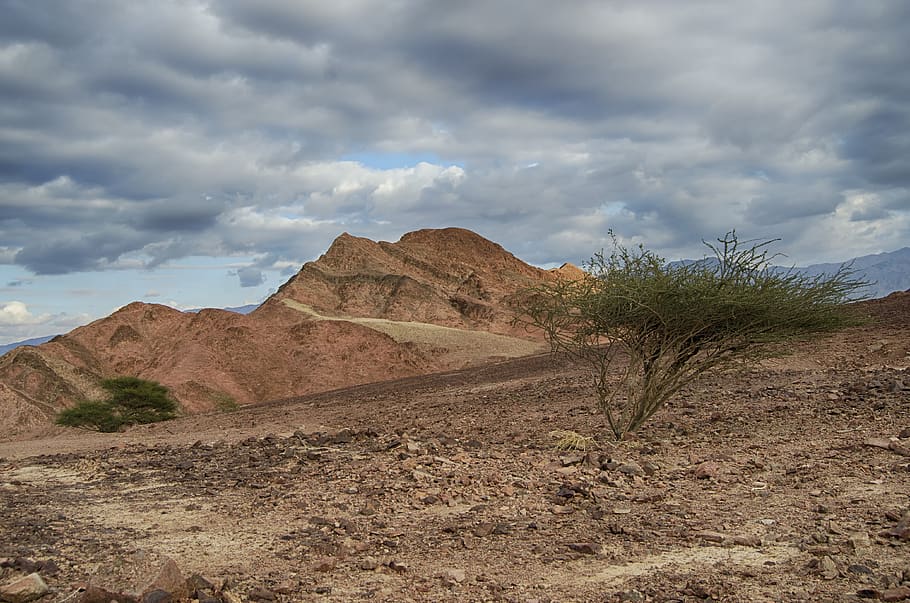Arid lands are places of water scarcity or where water remains frozen. Tropical hot desert is known for excessive heat and inadequate rainfall resulting in dryness. In the cold deserts the soil is frozen for most of the year. The heat of the sun is so weak that the ice does not melt in many places. As a result water is not available for plant use.
Characteristics of Arid Lands

- They are characterised by very little rainfall which is very irregular in distribution, therefore water is very and shortly supply.
- The temperatures are usually in the extreme, very high in the day time and very low in the night time.
- Atmospheric humidity is very low.
- Sunshine is very intense and penetrating in the hot deserts.
- The mean annual evaporation is very high.
- The environment is naturally very windy.
- They have very scanty vegetation
- The ground may in many places have sand dunes.
- The tundra is covered with ice in most periods of the year.
Types of Arid Lands
Arid are terrestrial habitats without water. There are two types of arid lands.
- Hot and dry deserts: here the temperature is usually as high as 80%. These include the hot deserts of the world such as Sahara desert of North Africa, Kalahari and Namib desert of Peru in south America.
- Cold and frozen desert: they have very low temperature of below 00 during winter. The top soil is frozen all the year round and the long winter lasts about 9 months annually. Cold desert include Gobi desert in china, the Pantagonian desert of South America, and the Tundra in Greenland and the USSR.
Distribution of Organisms in Arid Lands
Very few plants survive in the arid lands and include the cactus family, grasses and thorny shrubs. As soon as rain falls the seeds germinate and make food available for a short time for primary consumers. Grasses grow during the short wet periods.
Fewer animals live under vegetable litters or branches, leaves and trunk of trees and shrubs while many more live in burrows in the soil. Among the primary consumers are beetles, larvae of insects, ants, grasshoppers and small animals like rodents. They feed partly on seeds and partly on dry remains of desert vegetation. Higher – order consumers are centipedes and scorpions. The predators are carnivores such as lizards, geckos, vipers and spiders.
Some Adaptation of Organisms to Arid Lands
The adaptation of plants and animals in arid lands are similar to those exhibited by the savanna plants and animals to survive drought and high temperatures. Many of the arid land plants also have their modified into scales or thorns. Some such as cactus also store water. The camel is an example of arid land animal which can go about for a long time without water.
Adaptive Features of Plants in Arid Land
Plants that are adapted to dry habitat are called xerotypes. They possess the following characteristics:
- Elongated, slender, branching and roots capable of penetrating great depths.
- Possession of water storage tissue in their stem. Possession of adaptive features such as waxy leaves with thick waterproof cuticle, sunken stomata covered with air and thick layer over stems and roots which help to reduce transpiration.
Adaptive Features of Animals in Arid Lands

- Body covering is dry and impermeable to water
- Engaged in burrowing during the day and are active at night to avoid daytime heat.
- Possession of excretory system that reabsorb water efficiently and only excrete concentrated urine and faeces.
- Possession of mechanisms of reducing water lost with exhaled air.
- Possession of fringed feet and toes to enhance walking on loose sand.
- Possession sand coloured body to aid camouflage and to remain undetected by predators.
- Examples of animals in arid lands include camels, Lizards, snakes, locust, birds, fox, antelopes and jerboa.
EVALUATION (POST THE QUESTION TITLE AND YOUR ANSWER IN THE QUESTION BOX BELOW FOR EVALUATION AND DISCUSSION)
- List three characteristics of arid lands.
- Name two lot deserts and one cold desert of the world.
- State three ways by which organisms adapt to the long drought of arid lands.
Read our disclaimer.
AD: Take Free online baptism course: Preachi.com 